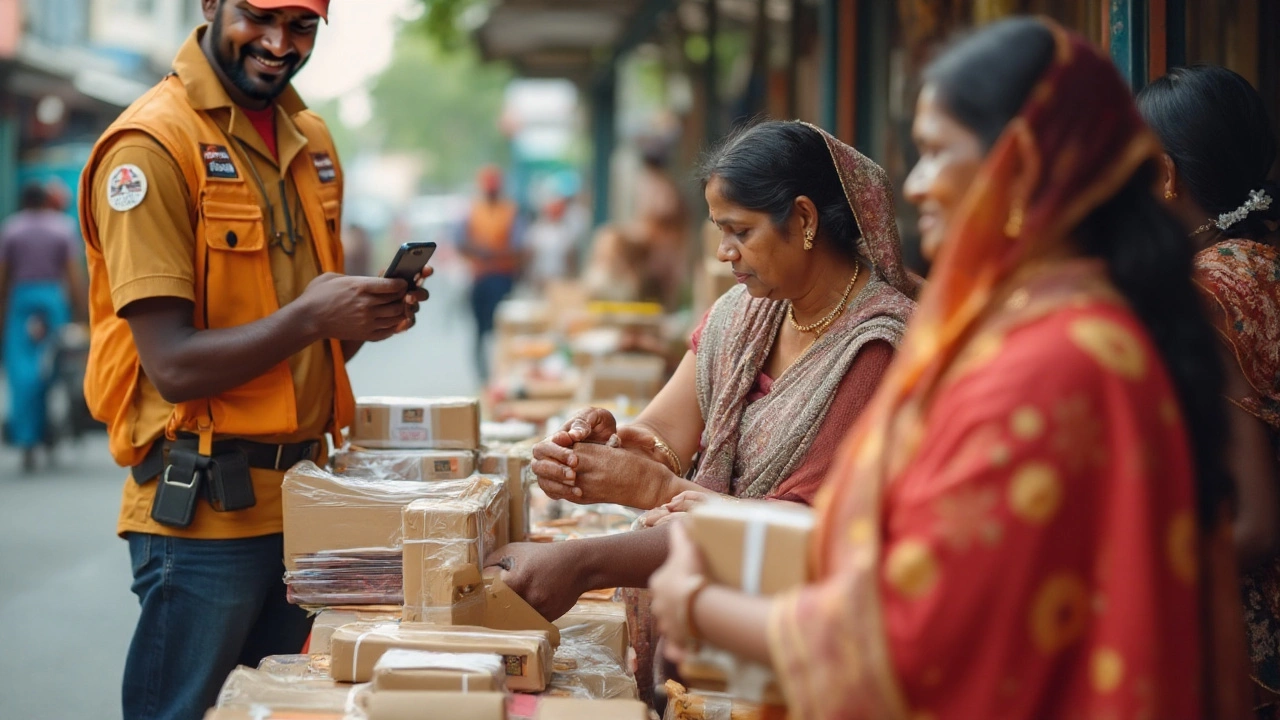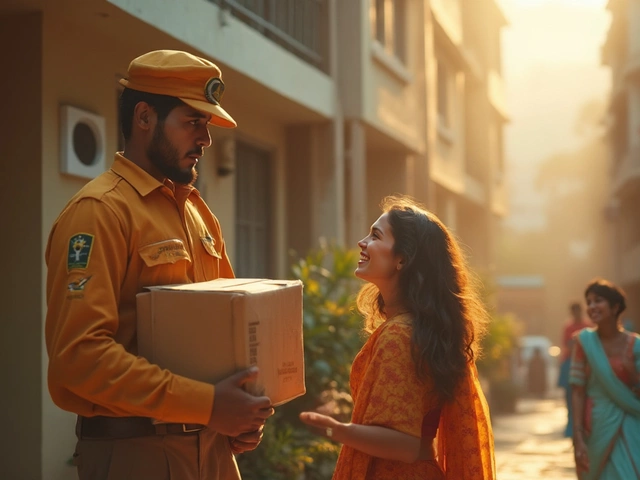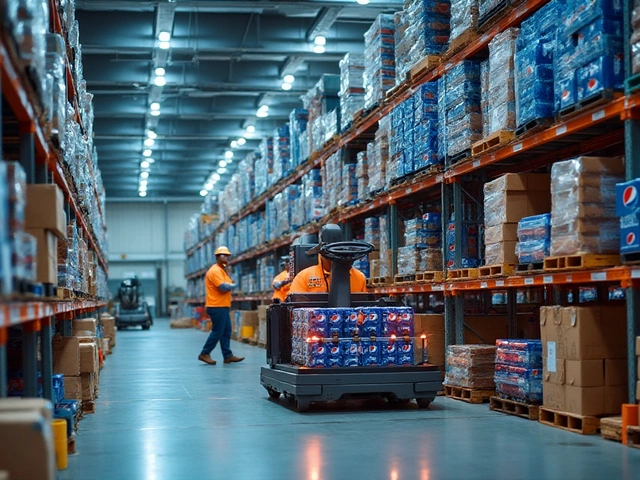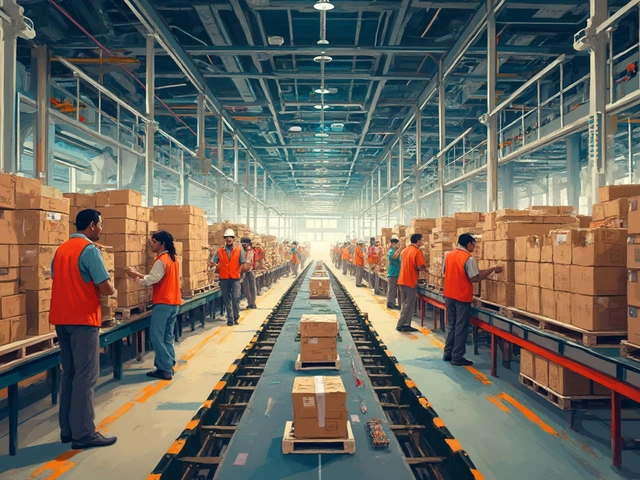Waiting for that delivery buddy to knock on your door with a mysterious box? You’re not alone—the world shipped a jaw-dropping 161 billion parcels in 2024, according to the Pitney Bowes Parcel Shipping Index. But what exactly makes that box a 'courier package' instead of just another package shipped through regular mail? If you think it’s all just stuff in boxes, you’re in for a surprise. Couriers—those specialized delivery services—roll out a very different red carpet for your stuff, and the whole idea of a courier package packs in more than you might guess.
What Really Is a Courier Package?
A courier package is a shipment handled by a courier service, which means specialized, secure, and usually faster delivery compared to plain old postal mail. But it’s not just about speed—couriers offer personalized tracking, insurance, and door-to-door service, even when your address gets tricky for regular mail. Let’s get specific: when you use a courier, your courier package is picked up from a sender (your favorite online store or even your cousin from another city), gets labeled with a scannable unique tracking number—think barcode or QR code—and follows a digitally trackable path until it’s delivered directly to you, often with a signature for proof of receipt.
Here’s something interesting: not everything qualifies as a courier package. For example, a casual birthday card in a standard envelope doesn’t usually go by courier, unless you want it delivered at rocket speed or with extra security. Couriers are the go-to for sending anything valuable, time-sensitive, bulky, or tricky: electronics, legal papers, expensive gadgets, gifts, high-fashion sneakers, or that limited-edition vinyl you bought online. Some items—like chemicals, large batteries, or artwork—require special treatment and paperwork. Certain couriers even offer bespoke shipments for heavyweight packages or temperature-sensitive medicine.
Why does the distinction matter? Courier packages are handled differently at every stage. While a letter via regular mail might mingle with thousands in a sorting facility, a courier package gets individual attention. Handheld scanners log every move—pickup, transit point, customs check, attempted delivery. That’s why you can track your new phone from the warehouse in Germany to your doorstep in Toronto down to the hour. People depend on this reliability. Lost a shipment via postal mail? Good luck. Lost a package via courier? Usually, there’s insurance and a way to claim or investigate.
It’s not just about private couriers either; traditional mail services like the UK’s Royal Mail or India Post now offer dedicated courier divisions—delivering parcels with tracking, proof, and guaranteed delivery windows. Courier packages are a huge part of global e-commerce, B2B supply chains, and even personal gifting. Different courier companies have their own size and weight rules. There’s usually a max size (like 70kg/155lb for DHL Express or 30kg/66lb with UPS) and dimensional limits—plus certain 'prohibited items.'
When the package’s journey is critical—overnight, same day, two-day—couriers step up. A 2023 report by Statista showed 65% of people pick retailers based on fast courier shipping options. Not urgent? Regular mail is cheaper but slower and less secure. Fragile items or insured items: courier it! Like a food delivery for parcels—speed, safety, special instructions, signatures needed.
Fun fact: in ancient Persia, the first recorded courier service used horseback messengers 2,500 years ago. We’ve come a long way since then—today’s couriers use real-time GPS, automated sorting, and even drones in test cities. That’s a massive upgrade over camels and handwritten tags.
So, when someone asks 'What is a courier package?', think of it as a VIP ticket for your parcel—personalized, prioritized, and protected, backed by systems built for reliability.
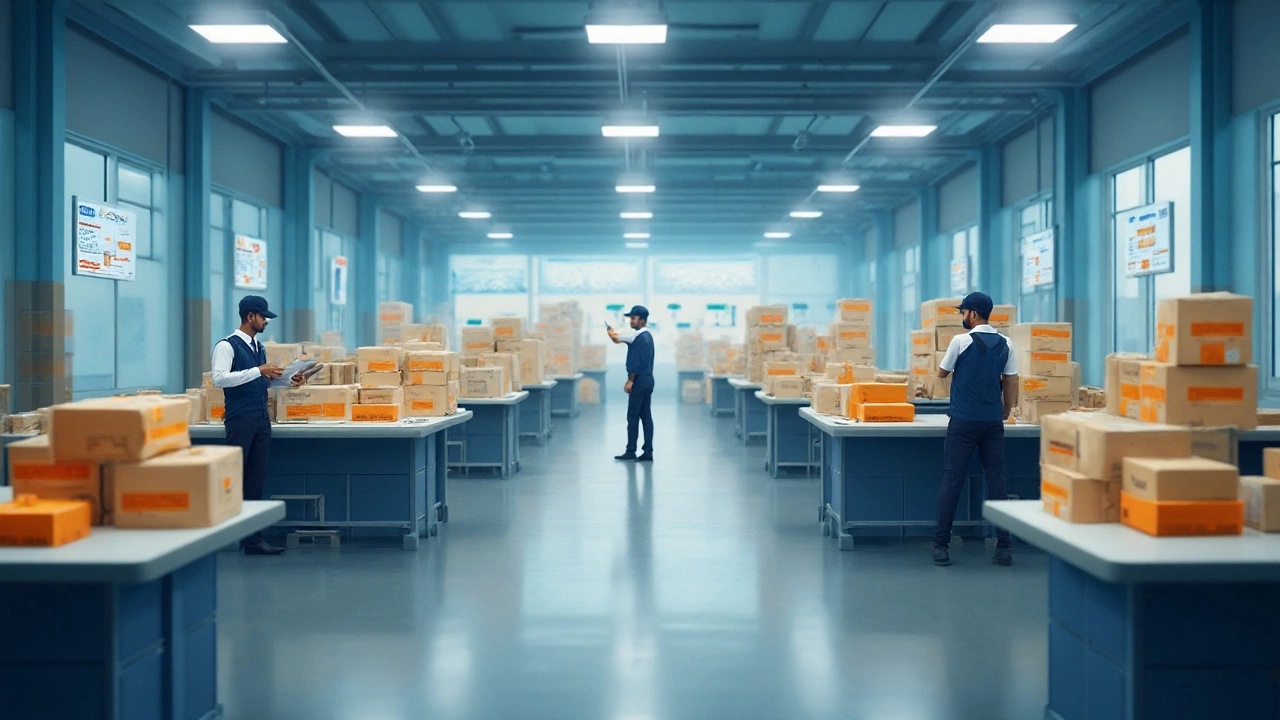
How Couriers Handle Packages: The Full Journey from Sender to Receiver
The fascinating part about every courier package is its trip—faster, more traceable, and almost always safer than slow-mo mail. It all starts with the sender booking the shipment online, via phone, or even by walking into a courier shop. Once you hand over your parcel, it’s measured, weighed, labeled (with those all-important tracking barcodes), and scanned into the company’s system. Each scan logs the item in a digital record—even the route and truck (or airplane) it’ll travel on. Want exact stats? Over 99.98% of FedEx’s shipped packages reach their final destination without loss or damage, based on the company’s 2024 annual report. Impressive, right?
Next, the courier’s driver physically collects the package and it’s off to the closest distribution center. Unlike standard mail, which might be sorted overnight and spend days in warehouses, courier centers often operate around the clock, using conveyors and automated systems to channel parcels to their specific routes. Here’s where the speed magic happens: express, same-day, or even four-hour windows are made possible by this high-octane sorting.
The technology behind it is intense. Packages are stamped with electronic tags, scanned at checkpoints, entered into global tracking platforms, and, in some cities, matched to real-time traffic data for optimal delivery routes. Big names like DHL, UPS, and FedEx manage regional air fleets—yes, they actually have planes in the sky just for express packages. Didn’t realize your birthday sneakers could fly? Now you know.
Curious what happens if there’s a hiccup—address error, missed delivery, or customs hold? Couriers stay in touch via phone, app, or email to fix things fast and keep the status visible for you and the sender. That’s a big contrast with plain post, where 'undelivered' might just mean a return to sender without warning.
Customs is its own beast: when packages cross borders, courier firms act as your customs broker, doing the paperwork and handling fees (that’s how imported gadgets arrive so fast, even with government checks). Some companies, like DHL Express, specialize in super-fast clearance—sometimes in under two hours for major gateways like London, New York, or Singapore.
Receiving a courier package is just as easy. The courier calls, emails, or texts to schedule drop-off. Lots of services let you pick time slots, change addresses last-minute, or even put vacations holds. Doorstep delivery almost anywhere—a city skyscraper, suburban home, or hard-to-find workshop at the edge of town. Options include after-hours, weekend drop-offs, and even discreet delivery for high-value items.
Let’s break it down with some real stats. According to Statista’s 2024 global delivery survey, average last-mile courier delivery time in major cities is under five hours, while postal services average 2.5 days. That’s a game changer for urgent items or anything valuable.
| Delivery Type | Average Time (Urban) | Tracking | Insurance |
|---|---|---|---|
| Courier Package | Under 5 hours | Live updates | Included/Optional |
| Postal Package | 2–3 days | Limited | Extra Fee |
Want to know if your neighbor’s shady-quick 'overnight' delivery is possible? Couriers do it. Same day? Yes, but often pricier. Real-time tracking and delivery photo proof? Standard on most apps, with push notifications or even route maps on your phone.
Are courier packages safe? Industry stats show theft and damage are rare—significantly lower than standard shipped goods. Courier drivers are vetted, trained, and operate branded vehicles with scanned access to warehouses. Pro tip: always check it’s a real courier—beware of scams using fake uniforms in big cities. If in doubt, call the courier company directly (using numbers from their website, not from random texts).
One last thing: Not all courier companies are equal. Globally recognized ones (DHL, FedEx, UPS, TNT) serve 220+ countries with consistent systems, while smaller local or regional couriers might offer better flexibility or price for short distances but can’t always match global reach. Got a weirdly-shaped art sculpture or medical sample? Ask your courier for 'special handling'—most will advise how to package it for safe delivery and tell you the legal musts. Sometimes they'll supply custom packaging, pickup, or extra insurance for orders worth thousands.

Tips for Getting the Most Out of Your Courier Package
First off, always check package size and weight limits. If your shipment is too heavy, you could end up paying way more than planned or, worse, have it returned. Measure your box and check your courier’s chart—oversized items can cost up to double, so don't eyeball it. If you’re worried about damage, double-box your goods and use bubble wrap, foam, or old T-shirts for padding. Fragile stickers help, but robust packing works better—couriers move fast and sometimes stack loads high in their vans.
Documentation matters. For international courier shipping, always include two copies of the invoice and fill all customs fields. Leaving one field blank can delay your package for days. Couriers often contact you for paperwork updates—stay reachable and respond quickly. For really valuable items, list the actual value for insurance, don’t downplay it to save cash—insurance pays out only up to the value declared, no more, no less.
Timing counts. If you need something delivered urgently (same day, overnight, two-day), order pickups in the morning—most couriers have cut-off times, and miss the window, you wait another day. These deadlines vary by area, especially in rural places. Pro tip: in cities with major courier hubs, late-night pickups are sometimes possible for extra cost.
"Choosing a courier service over standard mail isn’t just about speed—it’s about knowing where your shipment is, every step of the way," says Philip Bier, logistics consultant and author of 'The Fast Lane: The Logistics Revolution.'
Tracking is your friend. Download the courier’s app, set alerts, and keep an eye on your package. If something goes wrong—delay, rescheduled delivery, weird status update—call or email the courier immediately. Most issues can be fixed fast if spotted early. If you’re rarely home, some services let you reroute your package to a neighbor, secure parcel locker, or your workplace. Delivery options are far more flexible than regular mail—use them!
Watch out for extra fees. Couriers sometimes charge extra for remote destinations (often called 'extended area surcharge'), failed delivery attempts (especially after multiple tries), or special handling (like 'fragile' or hazardous materials). Always read the 'fine print' on the company website before booking. Some offer free redelivery, others charge—knowing this ahead saves unwanted costs or surprises. If your package is valuable, check that the courier’s maximum insurance matches or exceeds its price. For high-dollar goods, insure to the full amount—cheap add-ons can be worth it for peace of mind.
If you’re expecting a package from abroad, make sure you know the customs rules for your country. There might be import taxes or fees. Some countries are super strict (Brazil, Australia), while others let smaller items in without a fuss. Ask your courier upfront about potential duties or taxes—you don’t want a surprise bill on delivery day.
Last, always keep proof of shipment: your tracking receipt, digital booking confirmation, and a photo of your package before sealing. That’s your backup in case something genuinely does go wrong. Most claims go smoother when you have every detail ready. Also, if you get a package that looks tampered with, take a photo and sign for it as 'damaged' so any claim is easier.
The courier package world is fast, high-tech, and designed to work for you. From old-school messenger days to today’s apps, the core promise hasn’t changed: sending something important, quickly and safely, from door to door. That’s what makes a courier package more than just a parcel—it’s the new standard when you need delivery done right.
